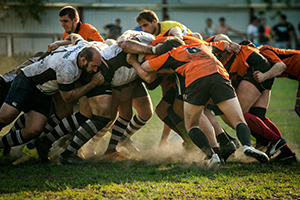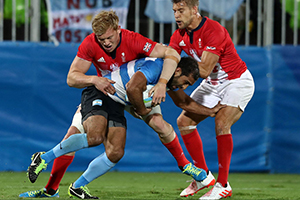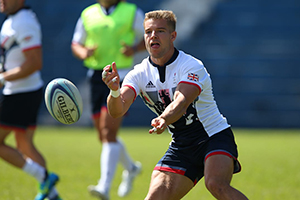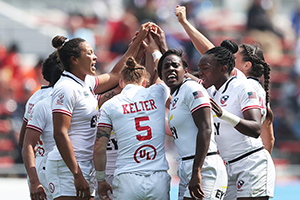RUGBY
The aim of rugby is to convey an oval-shaped ball to the goal line located at the opposing team's end of the field and earn points for doing so. This is achieved by running with the ball, passing and kicking it. Rugby differs from other ball sports in that the ball must be passed backwards between players as they advance towards their opponents' try line. Much of the sport's appeal lies in the players' speedy interplay and total commitment.
SPORT HISTORY
Rugby's roots can be traced back to the sport of football as it was played in English public schools during the 19th century. During a football match at Rugby School in 1823, a young player named William Webb-Ellis suddenly picked up the ball and ran with it towards the goal. His act marked the creation of a totally new sport. Rugby School gave the sport its name and developed its first set of rules.
The Rugby Football Union was founded in 1871, and the International Rugby Board — now known as World Rugby — was established in 1886. Today, different types of rugby union are played around the world — rugby (fifteen-a-side) and rugby sevens — with various competitions taking place. Rugby (fifteen-a-side) was played at Paris 1900, London 1908, Antwerp 1920 and Paris 1924 with men's teams only, after which came a long absence until the sport returned in its seven-a-side format at the Rio 2016 Games. A women's competition was also held for the first time in Rio.
Highest Governing Body
World Rugby
First Played
19th century England, United Kingdom
Contact
Full-contact
Team Members
15 (with up to 8 substitutes)
Type
Team sport, outdoor





